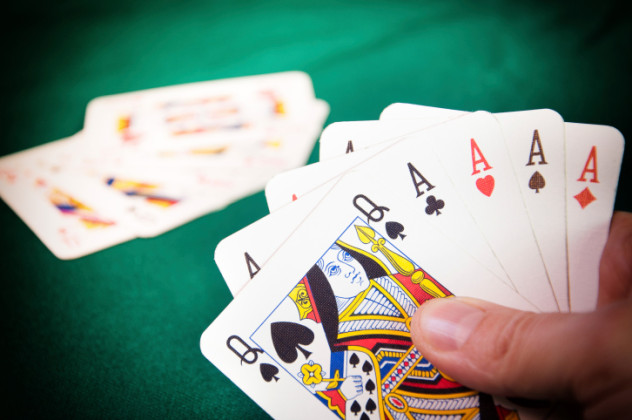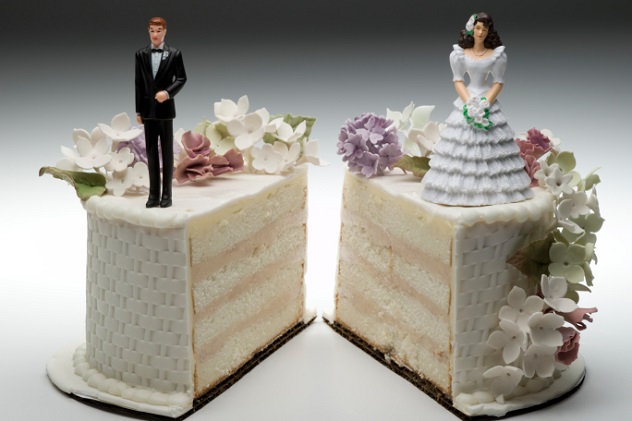10The Metric System
There are only three countries in the entire world that don’t use the metric system of measurement: Myanmar, Liberia, and the United States. Liberia has since partly adopted it, and Myanmar is currently in the process of transition, making the US the lone holdout. A proposal to switch to the metric system was recently brought before the state legislature in Hawaii, but it failed to gain enough support. For the rest of the world, the metric system is a necessary part of daily life. It was first introduced in France in 1795 and soon gained popularity throughout Europe, eventually reaching Asia, Africa, and the rest of the world. Its origins can be traced back to the volatile atmosphere of the French Revolution, when angry French peasants demanded a unified set of weights and measures. The government wanted this system to be “natural, timeless, and perfect,” descriptive of the Earth itself. The French Academy of Sciences sent its most reputable astronomers, Pierre Francois-Andre Mechain and Charles Messier, to precisely measure one ten-millionth of the distance between the equator and the North Pole. This distance was to be known as the “meter.” To do this, Messier needed to travel north to Dunkirk and Mechain south to Barcelona. Their journey was not without peril, as they were often mistaken for spies. After reaching Barcelona and sending the results of his readings, Mechain suffered an accident. While he was recuperating, war broke out between France and Spain, and he became an enemy national under house arrest. With nothing else to do, he pored over his 10,000 readings to make sure they were in good order, and to his horror, he found an error. The astronomer returned to France and found out that it was too late to make any corrections, but he was still determined to find the most exact reading possible. Sadly, on his return to Barcelona, he contracted malaria and died.
9Spices, Seasonings, And Other Flavorings
In the past, every pinch of salt, dash of pepper, or spoonful of sugar required tremendous effort to obtain. Salt was essential in preserving raw meat and other foodstuffs over long voyages, so it was much more valuable than it is today. Salt caravans crisscrossed the harsh Sahara Desert, finding their way by reading the stars, wind patterns, and sand dune formations. West Africa, one of the poorest regions in the world today, was one of the richest from A.D. 800–1500 due to the abundance of salt deposits in the area. The salt trade goes back even further. The town of Solnitsata in modern-day Bulgaria, the earliest known town in Europe, was a salt production facility that the entire Balkans envied. It is believed to have flourished from 4700–4200 B.C. on the strength of its salt imports. As civilizations rose and fell, salt gained a lasting prominence in the human diet. It held such importance that we derived the word “salary” from “salarium,” which was the money that Roman soldiers were given to purchase salt. Sugar, meanwhile, probably originated from New Guinea 10,000 years ago, where the cane was chewed like a licorice stick. Knowledge of this sweetener made its way to the Asian mainland, where Indians were processing it into powder by A.D. 500. The ancient Greeks mentioned a “kind of honey, like salt” and believed sugar was a medicine. Later on, Crusaders came back to their villages and castles in Europe, telling tales of the magnificent “sweet salt.” European voyages to the Americas and Asia were spurred significantly by the promise of vast riches and a dash of spices, particularly black pepper, which only the rich could afford. Black peppercorn was also used as part of the mummification ritual of Egyptian pharaohs, and Ramses II was known to have had peppercorn stuffed in his nose. Pliny once complained that Rome spent too much on pepper, and indeed, 50 million sesterces were spent annually to import the goods from India. Pepper was such a hot commodity that it became known as “black gold” and functioned as an exchangeable currency. This was exploited by Alaric the Visigoth and Attila the Hun when they demanded over one ton of the spice in exchange for peace.
8Selfies
Technological advancements in photography have given us wonderful moments captured on film or in digital form, but its inception goes back thousands of years. The concept of taking a photo was first mentioned by Chinese philosopher Mozi during the fifth century B.C., and even Aristotle was known to have used a “camera obscura” to observe an eclipse a century later. While we’ve mentioned before that the medieval world’s fascination with mirrors led to the creation of self-portraits, the first “selfie” is believed to have been taken in 1839 by Robert Cornelius , an amateur chemist and photography enthusiast from Philadelphia. Using a daguerreotype, technology which had only been available for a few months, Cornelius stood slightly off-center while peering into the mechanism before taking the photo. The words “The first light picture ever taken. 1839” were written on the back. Decades later, group selfies were all the rage for aficionados, as evidenced by pictures of Joseph Byron and his buddies from 1909. Even Grand Duchess Anastasia, the ill-fated daughter of the Romanovs, got in on the craze in 1914.
7Eating Utensils
Forks were initially used for cooking only, and eating was simply done with fingers and knives. By A.D. 1004, however, the Middle East and Byzantine Empire had already begun using forks for dining, though they were reserved for the wealthy. After a Byzantine princess married the son of the Doge of Venice, his subjects were shocked when she brandished the utensils during the feast. They thought this practice was an insult to God due to “substituting metal forks when God had provided natural ones—fingers.” They scoffed at the princess over “the luxury of her habits” and “not touching her food.” When the princess died a few years later, it was considered God’s punishment. The practice slowly caught on in parts of Europe centuries later. In 1608, an English traveler named Thomas Coryate described how the Italians “cut the meat with the knife, and with the fork in their other hand, fasten it, for those who touch the dish with their own hands would transgress the laws of good manner.” Coryate sought to spread this dining etiquette to England, but the English rejected the custom, calling him “Furcifer,” or “the fork-bearer.” The British remained unresponsive to the use of the fork even after it gained popularity in France after the Sun King, Louis XIV, declared pointed knives illegal. Even as late as 1897, British sailors preferred not to eat using forks because they were “unmanly.” On the other side of the globe, chopsticks were used in China as many as 5,000 years ago, when twigs were used to retrieve large pieces of food from cooking pots. Around 400 B.C., the Chinese started cutting up food in smaller portions, so there was no need to use large knives anymore. The use of chopsticks over knives was even espoused in Confucian teachings, which read “the honorable and upright man . . . allows no knives at the table.” The use of chopsticks spread far and wide across East Asia. The early Japanese used it for ceremonial purposes, which is why leaving chopsticks sticking up in a rice bowl, resembling incense sticks during a funeral, is considered a great offense. Similarly, Koreans believed that the closer you hold the tip of the chopstick, the longer you’ll stay unmarried. While villagers used wooden chopsticks, royalty used silver, believing that the metal would turn black if the food was poisoned.
6Playing Cards
The deck of 52 cards is mostly believed to have Arabic origins, either from trade with the Mamluks of Egypt or the Muslims in Spain. This system of playing cards was already quite similar to what we enjoy playing today: four suits and the depiction of royalty. However, the royal courts at the time were dominated by men, so as strange as it might seem now, these cards included no queens. The original suits were the cups, swords, coins, and polo sticks. The latter eventually became batons, since Europeans had no idea what they were supposed to be. Later on, they evolved into the familiar clubs, spades, hearts, and diamonds. The practice of using suits could have come from China, which already had its own form of playing cards centuries earlier, around A.D. 800–900. These Chinese cards used increasing denominations of coins. As the cards grew in popularity, so did their regulation and practical use. In 1674, Charles Cotton published The Compleat Gamester, and 10 years later, paper money was issued in North America in exchange for playing cards that served as IOUs. The cards even reflected the political climate: During the Renaissance Period, playing cards were decorated with the vivid imagery of Christian or philosophical content. Revolutionaries in France, meanwhile, started playing “Ace High” games, representing the common man’s triumph over the monarchy. They also replaced the kings, queens, and jacks with “liberties, fraternities, and equalities” due to their disdain for the royals. Napoleon’s rise to power and a new regime would later undo many of the radical changes instituted by the revolutionaries.
5Toilet Paper
The use of toilet paper dates back to at least sixth-century China, when a scholar named Yan Zhitui declared, “Paper, on which there are quotations or commentaries from Five Classics or the names of sages, I dare not use for toilet purposes.” When Muslims visited China in the ninth century, they were aghast at the Chinese practice, remarking with disgust that the Chinese were “not careful about cleanliness—they do not wash themselves with water, but they wipe themselves with paper!” The history of toilet paper rolled along for a few hundred years until 1391, when the Chinese emperor ordered its mass manufacture. The Bureau of Imperial Supplies was tasked with producing 720,000 sheets every year, each sheet measuring 0.6 meters by 0.9 meters (2 ft by 3 ft), for the emperor’s own use. About 300 years later, Joseph Gayetty introduced packaged toilet tissue, sold under the name “Therapeutic Paper.” The sheets were covered in aloe to soothe sores, and each package of 500 sheets was sold for $0.50. Joseph had his name printed on each package to remind people that he was the source of their relief.
4Feminine Hygiene Products
In ancient Egypt, menstruation may have been viewed in a positive light. It was likened to the Nile River, which was the symbol of renewal and fertility, and might have even been used for medicinal purposes. In a particularly gross instance, smearing menstrual blood on the breasts was believed to make them perkier. The ancient Egyptians, Greeks, and Romans used a variety of materials to make tampons, such as papyrus, wool, animal skins, and even grass. It wasn’t until 1896 that Joseph Lister, the same man who inspired millions to use mouthwash and wash their hands before treating patients, inspired the Johnson brothers to create packaged menstrual pads known as “Lister’s Towels.” Unfortunately for Johnson & Johnson, as the company is called today, their first venture into the feminine care industry flopped because women simply weren’t ready to buy such things in public. In 1998, Arunachalam Muruganantham was sick of his wife’s insistence on using “nasty cloths” during her menstrual period instead of sanitary pads. After his wife replied that such things were outrageously expensive, Muruganantham decided to invent cheaper pads, but he had one problem: He had no clue how the menstrual cycle worked. In an effort to gain an understanding, he created a “uterus” from a football bladder filled with goat blood and hid it under his clothes to test the absorbency of his invention. Whenever he washed his clothing, villagers thought he had become a pervert, gone insane, or even been possessed by demons, but his sanitary pads eventually won him an award for innovation from the Indian president.
3Bras
The origins of the modern bra go back to 1910, when 19-year-old Mary Phelps Jacob was planning her outfit for an upcoming ball. She had chosen a gown that showcased her ample figure, but she found the corsets of the time too restricting. Instead, she asked her maid to bring her two handkerchiefs and a ribbon, creating the ancestor of the modern bra. High-society ladies flocked to young Mary, asking her how she was able to move and dance freely, and four years later, she was granted the patent for a “backless brassiere.” While Ms. Jacob has historically received credit for inventing the bra, recent archaeological evidence showed that women have been wearing linen bras since the 1400s. In the ensuing decades following Jacob’s stroke of genius, the bra went through a number of transformations. Notable among these is the creation of the Wonderbra, designed in 1964 by Louise Poirier for lingerie brand Canadelle. Contrary to popular belief, however, the idea of the push-up bra goes back much further. The first was designed by Frederic Mellinger in 1946 and soon became all the rage in Hollywood, where it was lauded as “The Rising Star.” In the realm of the bizarre, it doesn’t get much more head-scratching than the “Nipple Bra,” designed in the ’70s at a time when visible nipples were considered the height of sexiness.
2Divorce
The divorce rate in modern society is at an all-time high, and old-fashioned types decry incidents like couples splitting up after mere hours of marriage or over mundane reasons such as snoring as a mockery of the institution. However, divorce has actually been quite a simple practice in past civilizations. In ancient Egypt, marriage had no judicial consequence, consisting simply of a man and woman living under one roof. As such, divorce and remarriage was quite common. In Greece, the matter was brought up to magistrates and viewed objectively. In Japan, if a husband refused to grant a divorce, the wife could elect to live in a temple for three years, after which the marriage was automatically dissolved. Viking women were more than welcome to leave their men if they were unable to provide for the family. In Medieval Britain, divorce was a strictly ecclesiastical matter. The Anglican Church, which was ironically established so that Henry VIII could divorce his first wife, was even more constricting than the Catholic Church that it sought to overpower. Change was only possible through the efforts of Caroline Sheridan, the wife of Parliament member George Norton. Sheridan was mistreated by her husband, finding solace only in her children and her writing. Norton once coerced her to become “friendlier” with Lord Melbourne, only to sue the man and accuse Sheridan of adultery in 1836. Norton lost the case but proceeded to take the children and his wife’s earnings, compelling Sheridan to campaign for the rights of married women in Britain. She lobbied statesmen, published pamphlets, and even wrote to Queen Victoria herself. Sheridan’s heartfelt words concerning the nation’s harsh and unequal marriage laws were influential in passing the Infant Custody Bill of 1839 and the Marriage and Divorce Act of 1857.
1Crime And Punishment
Crime and punishment as a tool of the state can be traced back to Babylon and the “Code of Hammurabi,” which advocated the “law of retaliation” for those who violated it. The Greeks, such as Plato, prescribed imprisonment for specific crimes like high treason or debt to the government. Since the poor were unable to pay, they were often left to suffer long periods of imprisonment, leading to the imposition of maximum sentences. In most cases, however, justice was still enacted in a simpler and swifter manner. In Rome, if you were rich, you were placed under house arrest; if you were a commoner, you faced the executioner’s blade or the slave market. In some cases, criminals were offered the choice of voluntarily leaving their homes to go into exile. Offenders who were held captive while awaiting their trials were called publica vincula or carcer, hence the word “incarceration.” By the 1570s, workhouses where vagabonds were sent for labor rather than face harsher penalties, called “bridewells,” were commonplace. In the 1680s, Quakers began to advocate imprisonment as an alternative to the death penalty. A century later, Pennsylvania eliminated capital punishment for certain crimes while many called for reform, arguing that “an indiscriminate system of punishment encouraged criminals to be equally indiscriminate.” In the US today, only 32 states still practice the death penalty. The practice of notifying the public of an offender can arguably be traced back to the Bible. After Cain killed his brother Abel, he was marked by God to distinguish him from everyone else in the world and to shame him forever of his crime. The practice of similarly “marking” an offender became prevalent by the 1700s, notably the scarlet “A” for “adulterer.” Other letters worn to signify an offense included “B” for “blasphemy,” “D” for “drunk,” “M” for “manslaughter,” and “T” for “theft.” Jo wonders if the hustle and bustle of modern society has caused us to forget the origins of everyday things and how simple things were in the past. What do you think? Let him know via email.
























